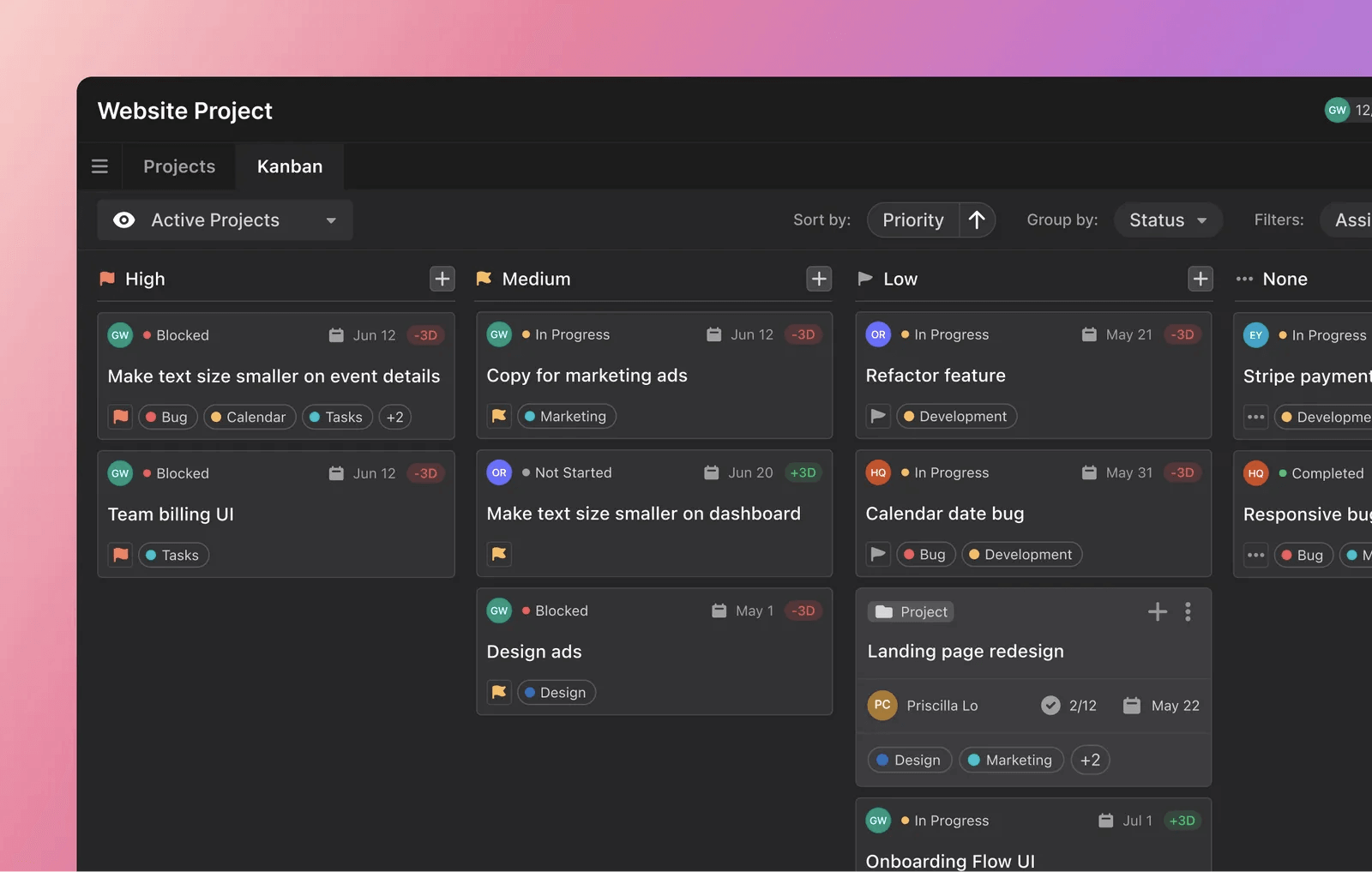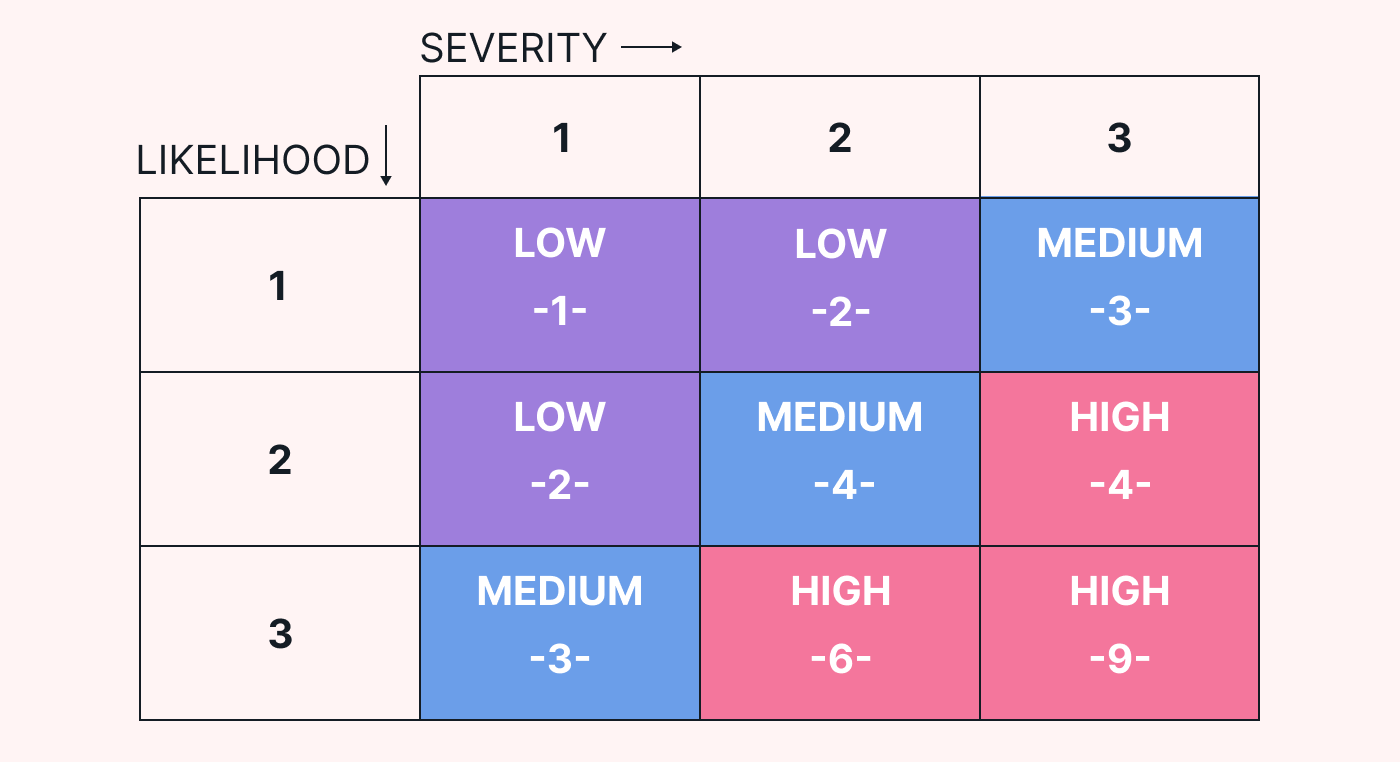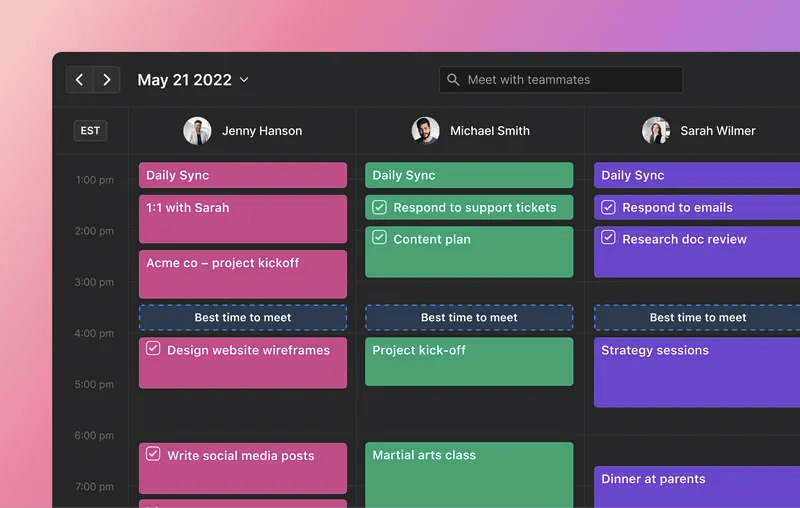Facing unexpected challenges can derail your entire project. You plan every detail of your project, and without warning, you find yourself scrambling to manage risks that pop up out of nowhere.
The good news is that there are ways you can mitigate these challenges and make it easier to bounce back when hurdles inevitably crop up.
The answer? Creating a risk register.
In this article, we’ll show you what a risk register is, what it records, and how to create one of your own. By the end, you’ll be able to navigate uncertainties and keep your project on track — even when things don’t go to plan!
What is a risk register?
A risk register (also known as a risk log or risk database) is a document that helps you capture, assess, and manage risks. It’s part of the risk management process, which is one of the activities that fall under the umbrella of project management.
The register provides a structured overview of all your potential risks, their characteristics, and the activities you have in place to mitigate them. It helps you figure out how likely it is for each risk to occur, the impact they could have, and who’s responsible for managing each risk.
What’s recorded on a risk register?
The exact information you’ll record in a risk register depends on the type of business you’re running and the potential risks that could impact your work.
However, there are certain elements that crop up in most risk registers — let’s take a look at what they are.
- Risk description: The risk description is a clear and concise explanation of the potential risk. It describes its nature, the potential consequences of the risk, and any other relevant details.
- Risk category: Categorizing risks helps you organize and prioritize risks. For example, you can assign risks to certain themes or areas, such as technical, operational, financial, or legal risks. That way, it’s easier to track and manage these risks across the business.
- Risk owner: The risk owner is the person or team responsible for managing and monitoring each risk. By assigning ownership, you make sure that everyone is accountable for certain risks. It also creates clear lines of communication for risk-related activities, making sure that everyone knows whom to contact if risks come to fruition.
- Risk impact: Assessing risk impact involves figuring out the potential consequences of each risk. This helps you understand the severity of the risk and the impact it could have on your project or workflow.
- Risk likelihood: Evaluating the likelihood of business risks means determining how likely it is for a risk to occur. To do this, you review historical data, gather feedback from relevant team members, and consider other relevant factors.
- Risk response strategies: Your risk response strategies are the plans you implement to combat potential risks. The exact plan varies depending on the nature of the risk and the available options for managing it. Typically speaking, your plan will fall into one of the following categories: risk mitigation, risk transfer, risk acceptance, or risk avoidance (we’ll look at these in more detail later).
- Risk status: Tracking the status of each risk is an ongoing process. It involves monitoring the current status and progress of each risk to see whether it is active, mitigated, transferred, accepted, or resolved.
How is a risk register different from a risk matrix?
Although similar, a risk register and risk matrix aren’t the same.
The risk register is a comprehensive list of risks and detailed information about them. The risk matrix is a simple visual tool that helps you assess and prioritize risks based on their probability and impact.
 |
Think of it like this: the risk register is like your detailed notebook. You use it to jot down all the risks you come across, including their descriptions, impact, and what you plan to do about them. It helps you keep track of everything and stay organized.
The risk matrix, on the other hand, is a colorful chart. It helps you prioritize risks by looking at how likely they will happen and how much trouble they could cause. It’s like a little cheat sheet telling you which risks need immediate attention.
So, while the risk register helps you keep all the risk information in one place, the risk matrix helps you determine which risks are the most important. Together, they make an excellent team for your risk management adventures.
Why is a risk register important?
Let’s cover some of the reasons a risk register is important for businesses of all shapes and sizes.
- To effectively prepare for risks: A risk register helps you plan and prepare for what you’ll do if certain risks arise. This puts you in a stronger position to deal with challenges and minimize the disruption to your project or workflow.
- To mitigate risks: By maintaining a risk register, you proactively identify, assess, and address risks before they have the chance to happen. This reduces the likelihood that these risks will happen, meaning that your workflow can be more efficient and productive.
- To centralize your risk documentation: A risk register provides a centralized location for capturing and documenting all your potential risks. This makes it easier to track their progress and ensure your risk response plans are intact.
- To increase risk awareness: Simply by having a risk register, you increase risk awareness among project stakeholders. They’ll be aware of potential risks, their potential impact, and the likelihood they’ll occur. This creates a proactive and informed approach to risk management, helping your organization prepare for hurdles and challenges.
- To make effective decisions: A risk register helps project managers and decision-makers prioritize risks based on their severity. It allows them to make informed decisions about how to allocate resources and how to respond to change.
How to create (and maintain) a risk register
Now that we know what a risk register is, let’s walk through the steps you can follow to create a risk register of your own.
Identify and record potential risks
The first step is the identification of potential risks. This will be the starting point for the rest of the risk register, so you need to be clear about what risks could crop up and impact your business.
Here are a couple of ways you can identify potential risks:
- Review previous risks: Consider risks that appear in previous projects or areas of the business. This will help you pinpoint any potential risks that are relevant to your business in its current state. Using a tool like Motion is helpful for this part of the process. With our online platform, you can easily review previous project information, identify bottlenecks, and generally spot any risks that might come up again.
 |
- Host a brainstorming session: Brainstorming involves you and relevant stakeholders getting together to discuss potential risks. Having input from different people across the business is a great way to cover your bases and make sure that you consider all potential risks. Plus, it builds risk awareness and gets everyone on the same page in terms of risk management.
Prioritize risks by reviewing the likelihood and impact
After identifying your risks, you need to assess the following:
- The potential impact of individual risks on your project or workflow
- The likelihood that each risk will occur
This step helps you focus on the most critical risks that require immediate attention. The good news is that there’s an easy way to outline this information — by using a risk matrix.
With a risk matrix, you can review the likelihood and impact of each risk at a single glance. This makes it easy for you to prioritize risks and spot those that top the list of priorities.
Here’s how to create your own risk matrix:
- Create the matrix: Start by creating your structure for the matrix (you can use the below image as inspiration). When it comes to creating the matrix, consider using a small scale to categorize your risks. Whether it’s 1–3 or 1–5, keep it concise to avoid any confusion.
 |
- Add your risks to the matrix: After creating the matrix, add your risks to the relevant quadrants. It’s up to you and your project team to decide which risks are the most likely to happen and which will cause the most upheaval to your workflow.
- Pinpoint the top-priority risks: Once you have your list of risks, you can easily determine the impact of risks. Anything that’s highly likely to happen and cause a lot of damage should be at the top of your priority list.
Develop risk response strategies
The next step is to create risk resonance strategies to mitigate and prepare for any risks that arise. There are four common types of risk response strategies to consider here:
- Risk mitigation: Risk mitigation is the process of taking steps to reduce the probability or impact of the risk. Examples include implementing safety protocols, conducting thorough testing, or implementing redundant systems to prevent risks from happening.
- Risk transfer: This strategy involves shifting the risk to a third party and is commonly done through contracts, insurance policies, or outsourcing. For instance, you might transfer the risk of property damage to an insurance company by buying property insurance.
- Risk acceptance: Risks can also be considered acceptable, either because their potential impact is minimal or because the cost of mitigation outweighs the benefits. This is where the risk acceptance strategy comes into play, which involves consciously deciding to tolerate the risk. No specific action is taken other than routine monitoring and periodic reviews.
- Risk avoidance: This strategy involves removing the risk altogether. It may include changing project plans, processes, or activities to completely avoid the risk. For example, if a project involves high financial risks, the organization may choose to avoid it by not proceeding with the project.
The best strategy for your business depends on the nature and characteristics of each risk. For example, if you have a risk that’s very likely to happen and will cause a lot of damage, you might use risk avoidance. But if you have a risk that’s unlikely to happen and wouldn’t disrupt the project too much should it happen, you might use risk acceptance.
Assign risks to the right people
After creating risk response strategies, it’s time to identify who’s responsible for managing each risk. This person or team will be in charge of mitigating the risk, managing it, and enforcing the risk response strategy.
If you’re not sure how to assign risk ownership to the right people, here are a couple of tips:
- Assess knowledge and expertise: Start by evaluating the knowledge and expertise of potential risk owners. Look for people or teams who have the necessary skills and experience to manage the risks you’ve identified. They should also be capable of managing and implementing your risk response strategies, so keep this in mind.
- Use an online tool: After choosing who your risk owners will be, an online work management platform makes it easy to assign tasks and responsibilities to those risk owners. Take a look at Motion as an example. With our software, you can assign responsibility in a matter of clicks. Then, you can easily see who’s responsible for certain risks.
 |
Find out more about using Motion for task management.
Monitor and review your risks
The last step of the process involves regularly assessing and updating the risk register. This helps you make sure that your risks are up to date and that you’re aware of any progress in how risks are interacting with your business.
Here’s what you’ll need to track to monitor your risk progress:
- The status of identified risks: Keep up to date with the current status of your risks, as this could change over time. For example, a potential risk may become a very real threat. You need to be on top of this so you can make sure the right strategies are in place and get your business back on track.
- Any changes in the risk probability or impact: You may find that the chances of risks happening change over time. Likewise, the potential impact could change, too. Keep an eye on this so you can readjust your priorities.
- The effectiveness of your risk response strategies: If your risks change, chances are your strategies may need an update, too. So, to make sure your risk response strategies are still effective, review them in line with the current status of your risks.
You should also consider performing regular reviews to identify new risks. Then, if anything new crops up, you can incorporate it into your register so it’s on your radar.
Use Motion to track and manage risk in your organization
Risk management is an important part of any business. It helps you plan, prepare, and control risks to minimize disruption and keep your workflow moving as efficiently as possible.
To streamline your risk management, consider using an online work management platform like Motion. With our software, you can monitor risks in projects and across the entire business with our collaborative calendar. Plus, you can use our automation to regularly schedule those risk reviews.
Sign up for a free trial today.





